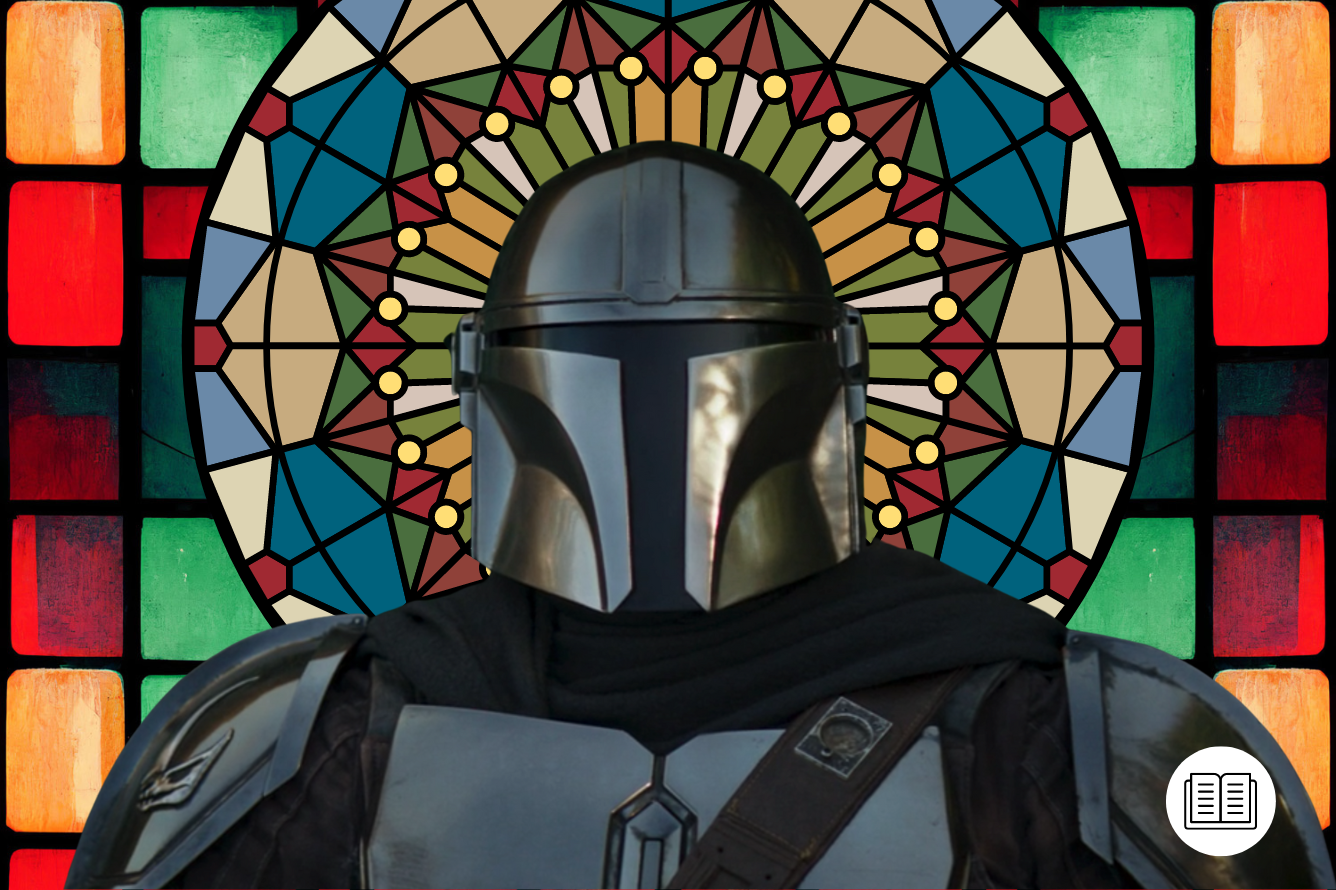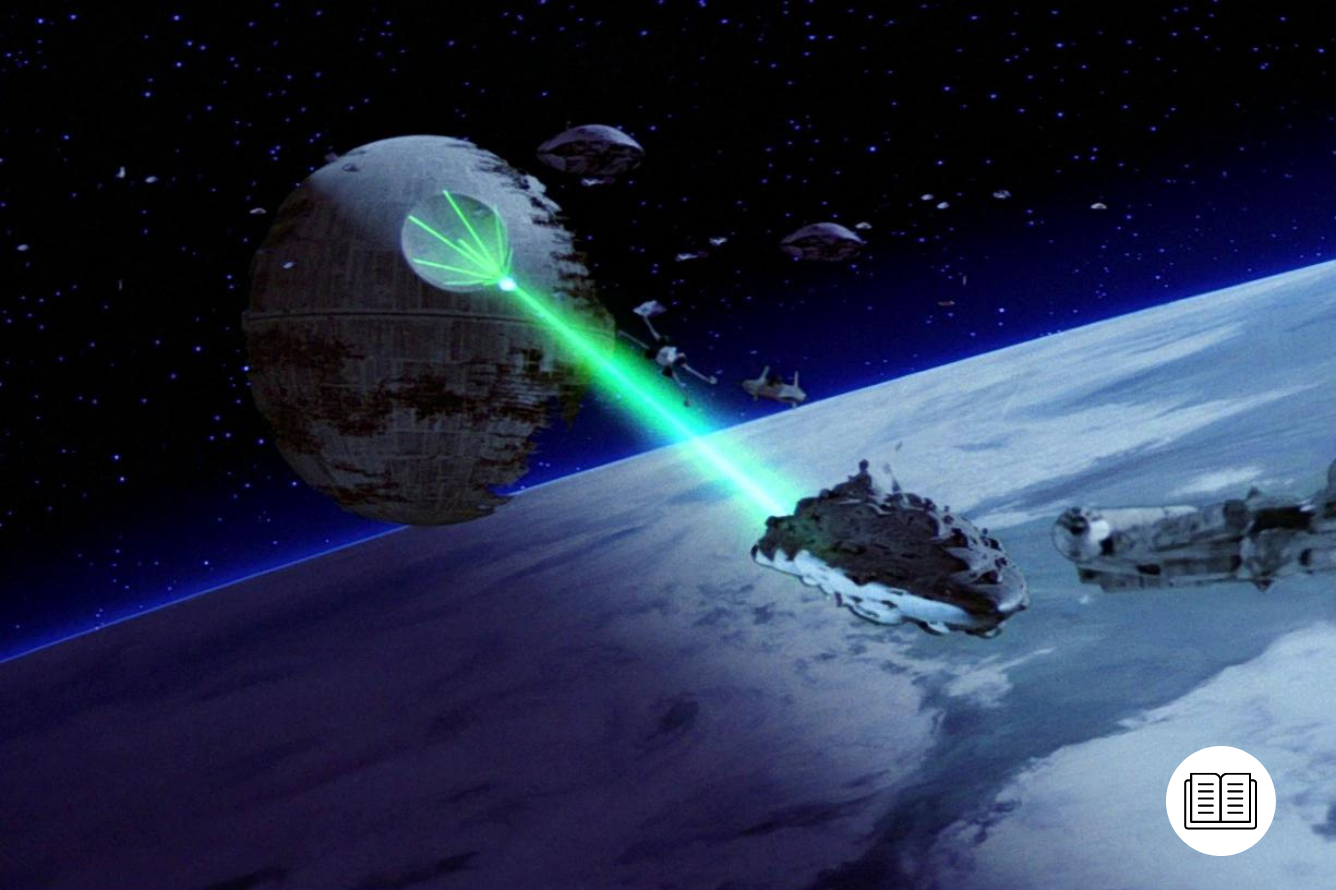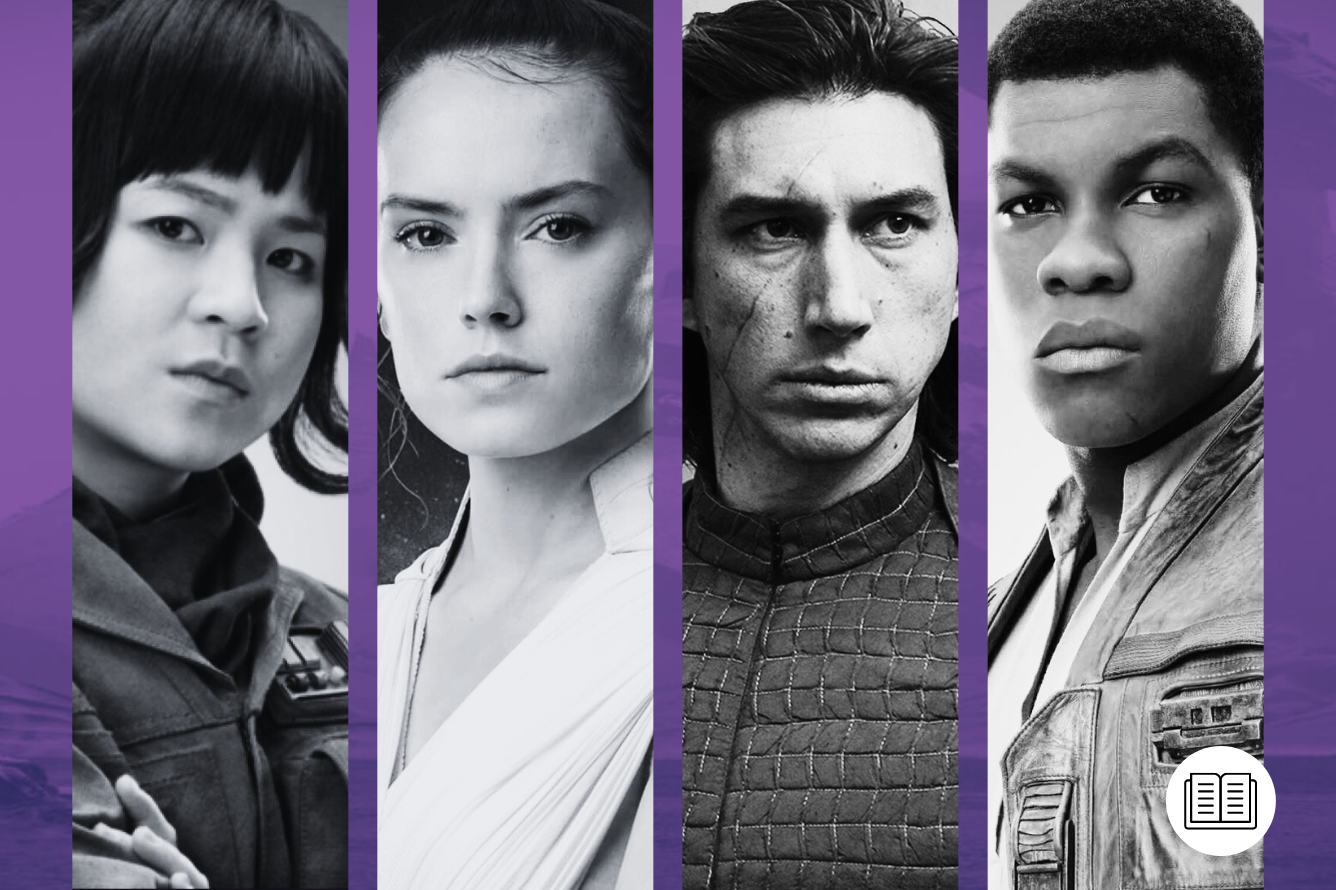From the beginning, it was clear that the Star Wars movies appealed to such a great audience, partly because they used archetypes found in ancient and classical myths. George Lucas found inspiration in ancient myth and was heavily influenced by myth scholar Joseph Campbell (1904–1987), who was even consulted for the first movies. His ideas on myth consist of several archetypes, including the “journey of the hero.”
The archetypical hero goes through several stages (quite simplified) in which the hero is called to depart, eventually goes on said journey, experiences challenges enters into a crisis, receives a revelation that transforms the hero, and finally returns home.
Scholars have noticed that the story of Luke Skywalker (the principal character of the Original Trilogy) is created after this so-called monomyth. Now, The Mandalorian is different from the Star Wars movies for a number of reasons, yet it follows patterns laid down by George Lucas and shows elements of Campbell’s mythical hero: the show – says director/executive producer Jon Favreau in the second episode of Disney Gallery: Star Wars The Mandalorian (‘Legacy’ – S1, Ep2) – aims “to teach them [i.e., viewers] the lessons of life through entertainment […] Story is still important and story with progression, and the idea of sacrifice and perseverance and evolution through challenge. Additionally, all of the little specificities that come along with it.”
Moreover, director Carl Weathers (who also plays Greef Karga in The Mandalorian) reflects on Campbell’s hero cycle in the show:
“I guess inside of all of us, there’s that hero that’s on that journey. Additionally, in search of and in connection to father, and to the father at large, the greater father you know. The connection to all that is, and how we access that and how we utilize that, and ultimately how that forms us in how we continue our journey as a result of that information and sometimes, how we fight against it. Additionally, that very fight is the thing that creates a kind of conflict in us that does not allow us to continue the journey.”
The whole show has a religious ring to it, which is displayed at various levels. The baby creature that Mando (Pedro Pascal) protects is consistently referred to as “The Child” and performs miracles like healing and telekinesis using the Force. The former slave Kuiil (voiced by Nick Nolte) who helps Mando often utters reverently and solemnly “I have spoken” and acts as Mando’s moral teacher. The main character never takes his helmet off in front of a person, which is part of the mysterious ethical code of the Mandalorians (a kind of repressed culture with a very specific way of life). The phrase “This is the way” is heard on account of the Mandalorians, as a kind of religious mantra.

The term “Leviathan” is used for a huge dragon that is killed in the episode ‘Chapter 9: The Marshal’ (S2, Ep1); this name stems from the Hebrew Bible where it represents some kind of monster. Many of these aspects recall themes or phrases in the New Testament and there are many more such aspects. The following is not an extensive list, and even these are not explored in full: we touch on most of them briefly in order to show the extent to which The Mandalorian and the New Testament share a stock of themes and motifs, which seem to be deeply culturally embedded.
Christian Coding of ‘The Child’
The second chapter is called ‘The Child’ (S1, Ep2), referring to the baby creature Mando has captured. At first glance, this kind of title might not be special. However, as it turns out, this child is special, as it saves Mando from a Mudhorn, a kind of rhinoceros, by levitating it (with the Force—we will come to that later) so Mando can eventually kill it.
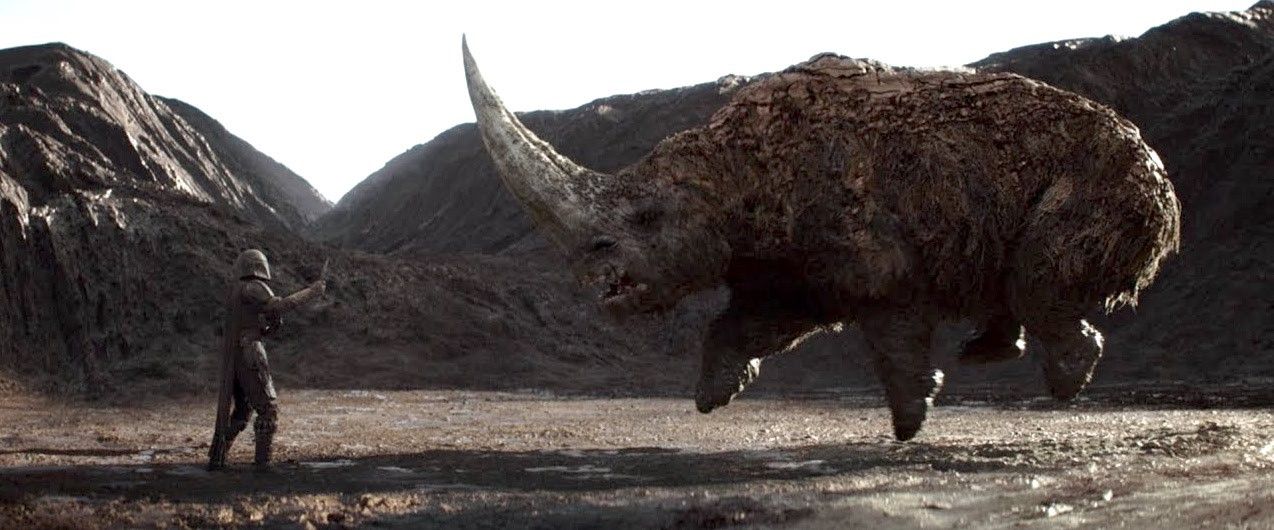
Throughout the series, the baby is consistently referred to as “The Child” (with a capital in subtitles), and it continues to do miraculous things, such as healing (fatal) wounds (‘Chapter 7: The Reckoning’ – S1, Ep7) and protecting Mando and his companions from a stormtrooper with a flamethrower by repelling the fire with an invisible Force-shield (‘Chapter 8: Redemption’ – S1, Ep8).
The New Testament recounts a story of a child as well, although there is not much on his youth. Yet, outside the New Testament, there is an abundant amount of Early Christian literature where the child Jesus performs miracles (Infancy Gospel of Thomas, Gospel of Pseudo-Matthew, and Arabic Infancy Gospel), although interestingly enough, neither the apocryphal, nor the canonical, child Jesus performs miracles for healing, nor for saving others from danger, as Grogu does.
It is intriguing that after Jesus’ birth in the Gospel of Matthew, Jesus is consistently referred to as “The Child” in Matthew 2:7–21 nine times). One could go further and conjure a parallel between both these children as they are both hunted down by the evil empire, whether Roman or remnants of the fallen Galactic Empire. Of course, to claim any likeness between Jesus and Grogu would go too far, but overcoding The Mandalorian using encyclopedic knowledge of the New Testament could lead to such suggestions. This seems to me more using the series rather than interpreting it.
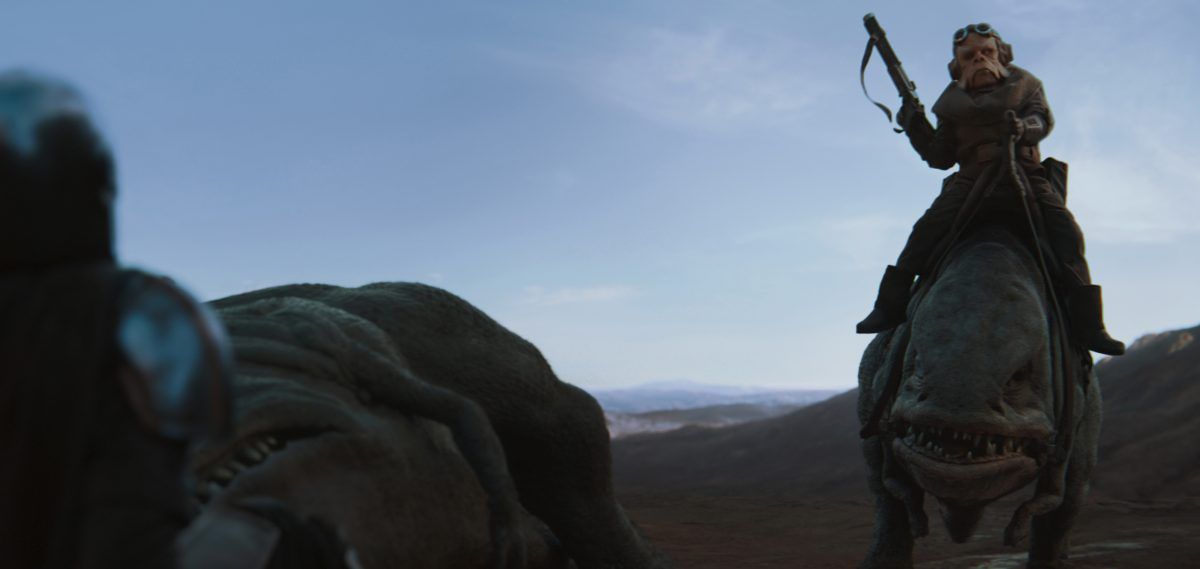
Additionally interesting are the utterances of the character Kuiil who first appears in ‘Chapter 1: The Mandalorian’ (S1, Ep1). Kuiil is a former slave who solemnly and repeatedly utters the phrase “I have spoken” as a kind of declarative affirmation. This almost has the same ring as the solemn “Amen, (amen), I say to you” of Jesus in the New Testament (76 times on the lips of Jesus in the Gospels), where “amen” is used solemnly to express certainty. Perhaps “I have spoken” on the lips of Jesus—appearing only in the Gospel of John (11 times), not in the other Gospels—is closer in wording, but it seems to have slightly less solemn connotations.
That ‘Chapter 2: The Child’ (S1, Ep2) can be understood in theological terms seems to be confirmed by the following episode, ‘Chapter 3: The Sin’ (S1, Ep3). While not exclusively a Christian notion, in the major Western cultural tradition the term “sin” has a long history in Christian theology, and its connotation now approaches something like a heavy burden; it is not often used in everyday language, and it is terribly complex.
Its meaning is not monolithic, and it is used in the New Testament—as well as in the Hebrew Bible—in many different ways. ‘Chapter 3: The Sin’ in The Mandalorian revolves around Mando doing something that is forbidden in the Bounty Guild, as Greef Karga notes: “You broke the code.” The code is not explicitly phrased, but it has to do with not asking what the client does with the bounty, and certainly not rescuing the bounty from the client, as Mando does. Therefore, the whole episode is framed as Mando doing something wrong, while the viewer is obviously sided with Mando, for why would there be something wrong with rescuing a mysterious and partially helpless toddler? This is of course to overlook the 38 deaths involved in saving The Child.
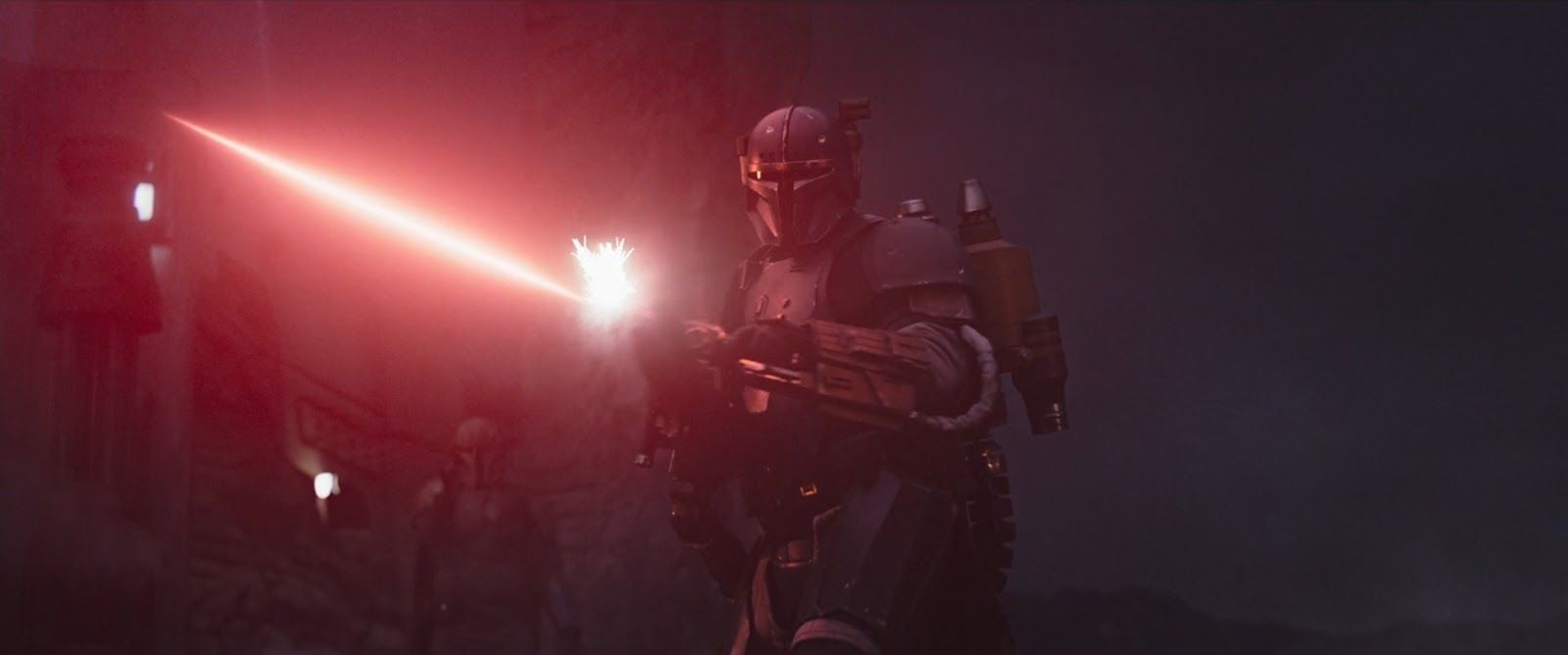
The “sin” is presented thus as going against a code, but in the end, it becomes a heroic act, the right conduct. Breaking free from an oppressive system is a common theme in Star Wars, which is also present in the New Testament. Jesus in his conduct and teaching is accused of breaking the “codes” himself on many occasions (e.g., healing on Sabbath, eating with sinners, not washing of hands before eating, the sin of blasphemy at the trial before his crucifixion, etc.).
Yet, like Mando, the greater sin is that of the oppressive system that they both resist, which is therefore deemed ethically appropriate in the story. Often new codes replace the old ones, e.g., in the New Testament the Sermon on the Mount (e.g., Matthew 5–7).
At this point, we very briefly touch upon three other episode titles: ‘Chapter 7: The Reckoning’ (S1, Ep7), ‘Chapter 8: Redemption’ (S1, Ep8), and ‘Chapter 15: The Believer’ (S2, Ep7).
“Reckoning” refers here to confrontations due to deals made and broken, in which individuals are held accountable for their debts. In this episode, this is seemingly paid with loss of life. ‘Reckoning’ is in this way also found in the New Testament where Jesus is represented as offering his life as a ransom (Mark 10:45), which is paid by giving up his life. Moreover, it is used in being held accountable (Matthew 18:23, 24; 25:19) to fellow beings as well as to God.
“Redemption” in The Mandalorian refers to escaping the death grip of Moff Gideon, the great opponent. Redemption is of course a recurrent theme in the New Testament: redemption is offered to those who believe in Jesus as the Christ and will heed his ways, i.e., redemption from death and the powers of darkness.
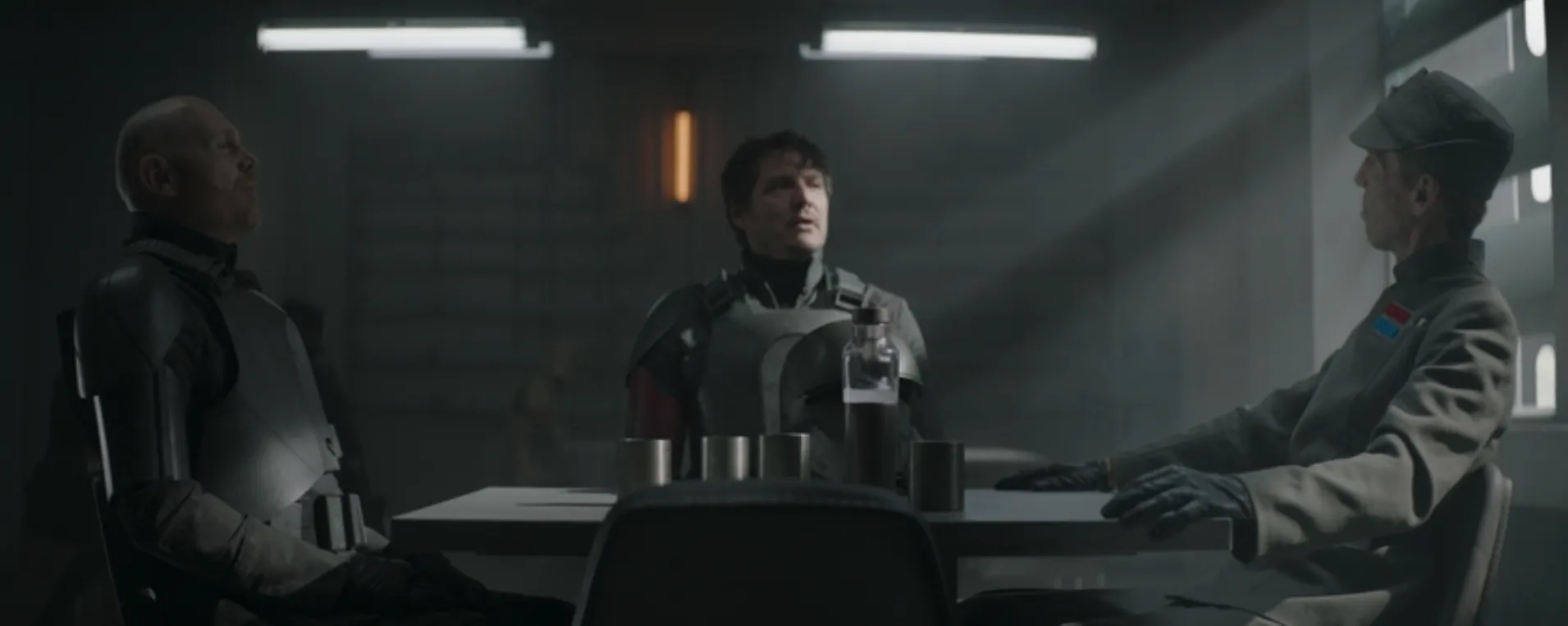
‘The Believer’ revolves around the beliefs of several characters, and how these beliefs are challenged. For example, there is a confrontation between the characters Valin Hess (Richard Brake) and Migs Mayfeld (Bill Burr), the latter questioning the former’s blind faith in the Empire at the cost of thousands of lives. Mayfeld also challenges Mando’s beliefs by relativizing them. Mando’s beliefs are also challenged when he has to break his code of not removing one’s helmet in front of others in order to obtain the location where Grogu is being held captive. It helps him see that some beliefs are not worth pursuing if it means that evil continues to roam throughout the Galaxy.
It may be clear that these issues are constantly present in the New Testament (e.g., Jesus undermining the status quo of fellow Jewish belief systems, esp. Matt 5–7; Luke 6:20–49, but also the so-called controversy stories, e.g., Mark 2:1–3:6).
Zealotry and the Way of the Mandalore
Another aspect that needs to be given attention is the Mandalorian base on the planet Nevarro. In that covert base, there is a forge where Mandalorian armor is made. Before Mando enters, the camera is focused on the metal skull of a mythosaur above the entrance, supported by some eerie music, which gives it an indefinable religious connotation. It recalls a crucifix set above the entrance of a room.
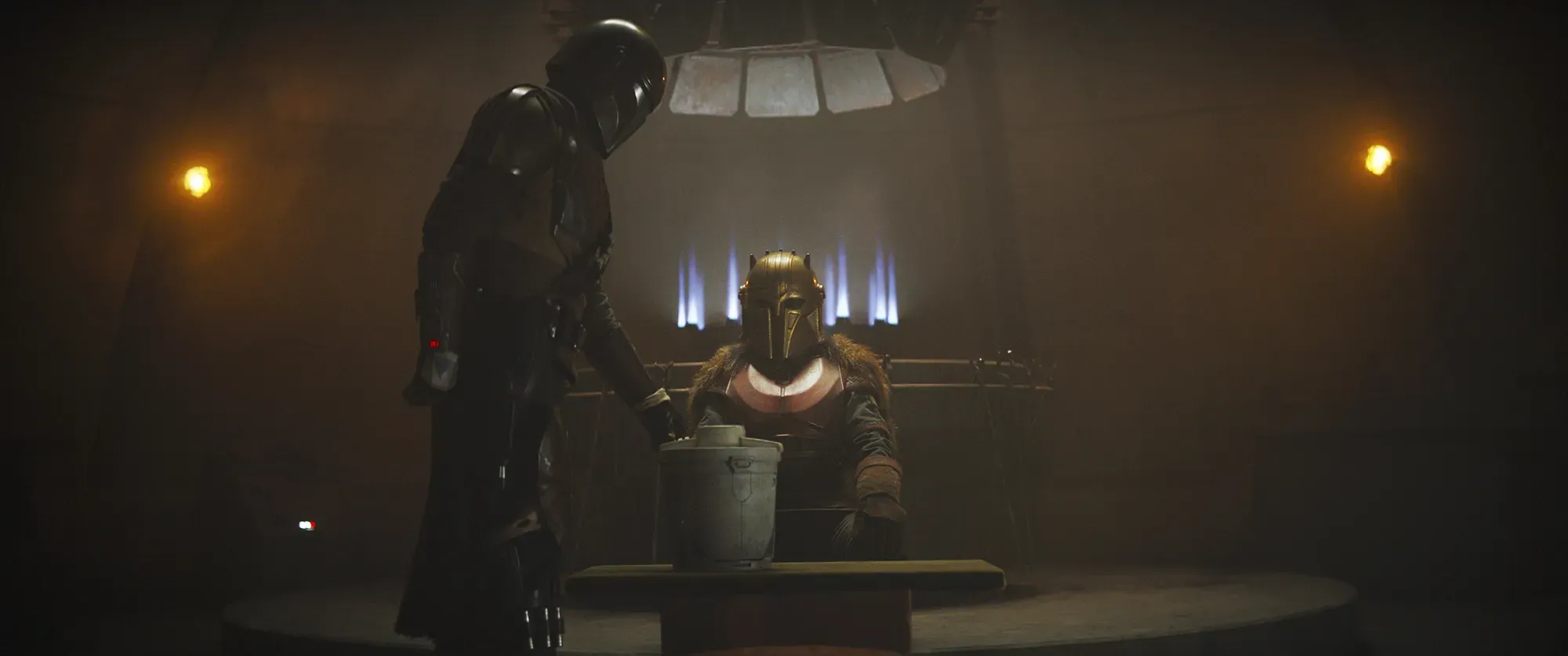
I would argue that this is exactly the kind of indefinable religious connotation the show wants to give the viewer: the Forge, where the secular and spiritual leader of the Mandalorians resides and forges new armor, is a kind of inner sanctum. This is the place where the phrase “The Way of the Mandalore” is uttered for the first time in the series. The Armorer states this solemnly and is answered almost liturgically by the other Mandalorians present with the phrase “This is the way” while the show’s thematic music plays.
“This is the way” refers to a way of life: never removing one’s helmet in front of a living person, nor having it removed by others, and hiding and living underground, as the Mandalorians have suffered a kind of genocide by the Empire in what is called the “Great Purge”. Star Wars is replete with these kinds of mantras, such as “May the Force be with you” from the Original Trilogy, or “I am one with the Force; the Force is with me” from Rogue One: A Star Wars Story (2016) and the above-mentioned “I have spoken.” The mantra in The Mandalorian seems to be part and parcel of being a Mandalorian.
As another example, Mando notes in the second chapter that he will not lay down arms, as this is part of his “religion” and we learn more in ‘Chapter 11: The Heiress’ (S2, Ep3) when Mandalorian moderate (spiritually if not politically) Bo-Katan Kryze (Katee Sackhoff) remarks on Mando’s peculiar motive of not removing one’s helmet:
“Additionally, you are a Child of the Watch… Children of the Watch are a cult of religious zealots that broke away from Mandalorian society. Their Goal was to re-establish the ancient way.”
Mando replies, “There is only one way. The Way of the Mandalore.”
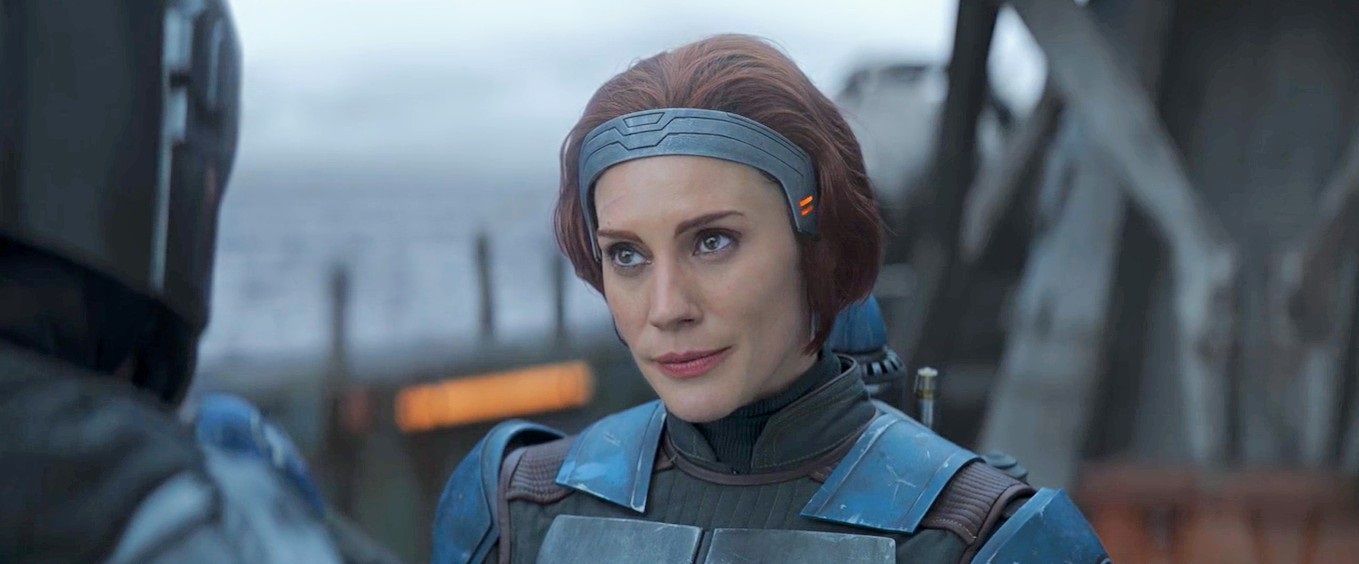
“Cult of religious zealots” is a clause packed with religious overtones in which the focus is aimed at the religious fanaticism that sets them apart from the “rest” of Mandalorian society as if an aberration. This aspect of “the Way”, and of there only being one way of living, is also a theme in the New Testament. For example, the Jews who identified themselves with Jesus were called “Followers of the Way” and called themselves as such. The apostle Paul even explicitly says that this Way is called, by others, “a hairesis”, from which we have the word “heresy” (Acts 24:14), setting them – like a cult – in opposition to the religious mainstream.
In his reply, Mando claims to have knowledge of the ultimate, and it is exclusive: there is only one way. There are no other ways. Everything else does not matter. This is also reflected in Jesus’ utterance: “I am the way, and the truth and the life. No one comes to the Father, if not through me.” (John 14:6). This theme of exclusivism is recurrent throughout the New Testament, e.g., Acts 4:12; 1 Timothy. 2:5, but also Matthew 10:37 and Luke 14:26. There is only Jesus’ way and one cannot serve other masters (Matthew 6:24; Luke 16:13); other ways lead to destruction (Matthew 7:13).
Both Mando and Jesus claim exclusivity, although the point of reference is different: Jesus refers to himself as “the Way”, and Mando points to “the Way of the Mandalore.”
This ancient way is not explored in the series; the show only highlights some parts that are particular to it, such as saying “This is the way” as affirmation, and particularly the prohibition of removing one’s helmet before another living being. This way of exclusivity touches upon the theme of cost, either for the individual or group. Mando leaves everyone behind in search of a “home” for Grogu, and he loses much along the way, including his ship—his “home”—and all of his belongings. Additionally, in ‘Chapter 14: The Tragedy’ (S2, Ep6) he loses Grogu. The costs or the setbacks the hero experiences are a common theme in stories, and we also find a parallel for this in the followers of Jesus, where the loss of possessions, freedom and even life itself is the cost (Acts). More specifically, going on the “quest” of being a follower of Jesus irrevocably results in loss (e.g., Matthew 10, Mark 8:34–38; 10:17–22; and Luke 14:25–35).
The Force and the Power of God
While the Force plays a large role in the major Star Wars movies—as it follows primarily Force-users—this is less so in The Mandalorian. With some foreknowledge, one assumes that Grogu is actually a Force-user—that is why he can protect from fire, heal wounds, and can levitate large objects and even persons. However, what is the Force exactly? As former Jedi Knight Ashoka Tano (Rosario Dawson) says in ‘Chapter 13: The Jedi’ (S2, Ep5): “The Force gives him his powers. It is an energy field created by all living things. To wield it takes a great deal of training and discipline.”
Professor John C. Lyden writes in Star Wars: The Legacy Revealed (2007):
“The idea of the Force is general enough that people of any religious background can identify with it. One can see it as a personal God of Western religion, one can associate it with a more spiritual ideal… The key thing to remember is believing in something higher… Something is guiding everything.”
This is also notable in the phrase, “May the Force be with you”, which also appears in ‘Chapter 13: The Jedi’ and ‘Chapter 16: The Rescue’ (S2, Ep8) and is said by Ashoka Tano and Luke Skywalker (a digitally de-aged Mark Hamill). It functions as a farewell and greeting, in which someone wishes this benevolent power that is much greater than anything, and that is guiding the Universe, to another.
It is worth noting that the phrase parallels the liturgical greeting from the Hebrew Bible “The Lord be with you” (e.g., Numbers 14:42; Ruth 2:4; 1 Samuel 17; 1, and Chronicles 15:2) and “The peace of Christ be with you always”, that is based on New Testament greeting formulae (e.g., 1 Thessalonians 1:1; 2 Thessalonians 1:2; Philemon 1:2; Galatians 1:3; Philippians 1:2; 1 Corinthians 1:3; 2 Corinthians 1:2; Romans 1:7; Ephesians 1:2; 1 Peter 1:2; 2 Peter 1:2; and Revelation 1:4).

If we return to Joseph Campbell’s The Hero with a Thousand Faces (1949), we see something strikingly familiar to Ashoka and Lyden’s remarks:
“Briefly formulated, the universal doctrine teaches that all the visible structures of the world—all things and beings—are the effects of a ubiquitous power out of which they rise, which supports and fills them during the period of their manifestation, and back into which they must ultimately dissolve. This is the power known to science as energy, to the Melanesians as mana, to the Sioux Indians as wakonda, the Hindus as shakti, and the Christians as the power of God…[I]ts manifestation in the cosmos is the structure and flux of the universe itself.”
It is by this Force that Grogu, Ashoka, and ultimately Luke Skywalker can do extraordinary things. It is interesting that Campbell connects this universal power with the power of God, for the New Testament often mentions the “power of God” or the “power of the Spirit” (Matthew 22:19; 26:64; Mark 12:24; 14:62; Luke 1:35; 4:14; 5:17; 22:69; Acts 1:8; 3:12; 8:10; 10:38; Romans 1:4, 16; 15:13, 19; 1 Corinthians 1:18, 24; 2:5; 5:4; 2 Corinthians 4:7; 6:7; 12:9; 13:4 (2x); Ephesians 3:7, 16; 2 Timothy 1:8; 1 Peter 1:5; 2 Peter 1:3; 16; etc.). This power of God or the Spirit is the power that gives life and accounts for the miraculous works, God, Jesus, and his followers perform.
In the Star Wars universe, one has to connect with the Force through meditation, to feel the Force flowing through oneself and every living thing. This is what Grogu does in ‘Chapter 14: The Tragedy’. Mando is advised by Ashoka to put Grogu on the “seeing stone” (part of an ancient temple) on a remote mountain on the planet Tython, in order to see whether Grogu is able to reconnect with the Force. Once there, Grogu reconnects but also becomes one with the Force. He sits in a lotus position, eyes closed, surrounded by a kind of energy column that seems to stream heavenwards, impenetrable for Mando who has to leave him temporarily. To connect with the ultimate power is, as Mandalorian actor and director Carl Weathers puts it: “Being in search of and in connection to father, and to the father at large, the greater father you know. The connection to all that is, and how we access that and how we utilize that, and ultimately how that forms us in how we continue our journey as a result of that information and sometimes, how we fight against it.”
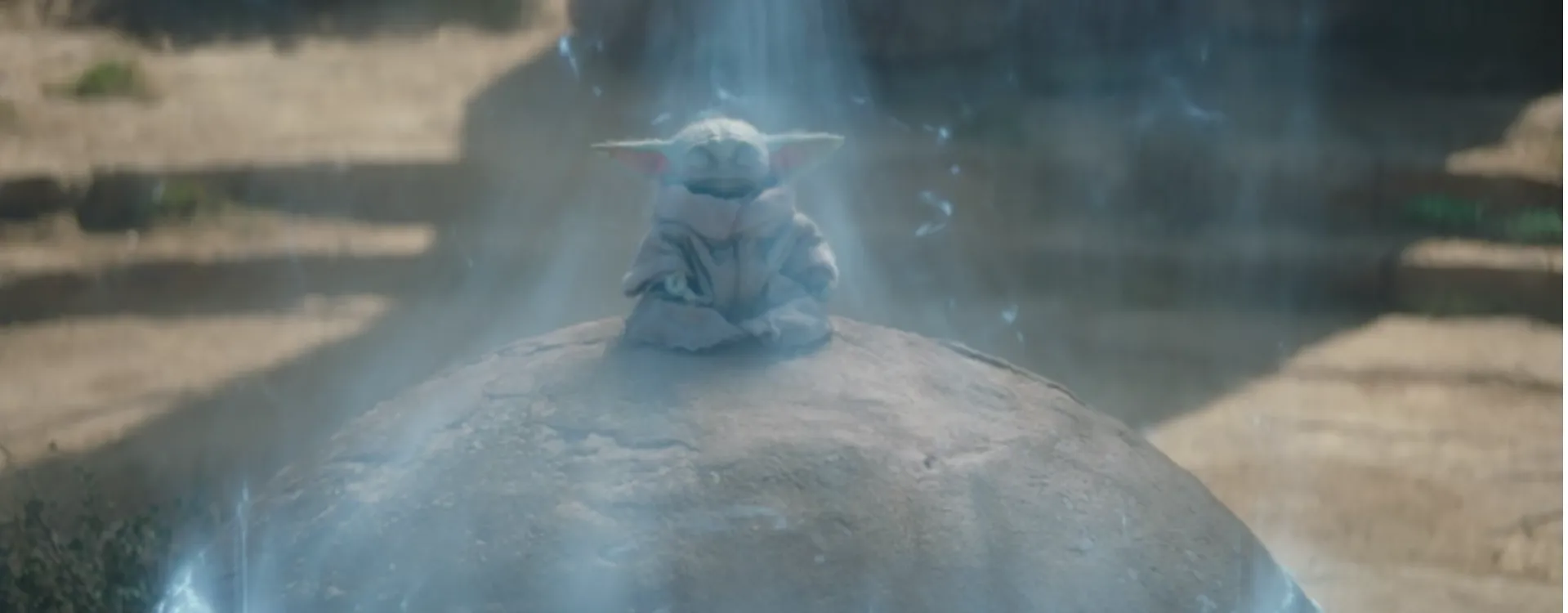
The scene of Grogu described above, together with Weathers’ and Campbell’s statements, shows that the Force becomes an almost distinct spiritual entity one has to connect to. For a New Testament scholar, the scene with Grogu recalls the way Jesus “connects” to his Father, the Father of everything, and becomes one with him (e.g., John 1:1, 18; 5:19, 30; 8:16–18; 10:30; 14:10; 17:1–8). Finding a connection with higher powers is a common theme in literature; it is often experienced on mountains or secluded places.
In the Hebrew Bible, we find, for example, Moses who was in God’s presence on Mount Sinai (Exodus 19:1–25), the contest on Mount Carmel between Elijah and the prophets of Baal (1 Kings 18), and Elijah who experiences God on Mount Horeb (1 Kings 19:5–18). In the New Testament, we read that Jesus withdrew himself to the mountain or a lonely place to pray to his Father (Mark 1:35; 6:46; 14:32–35; Matthew 14:23; Luke 5:16; 6:12; 9:18; 11:1) and that he was momentarily glorified in the midst of Moses and Elijah by a heavenly voice (Mark 9:1–10; Matthew 17:1–9; Luke 9:28–36). Mountains often feature in myths or religions, and have a mythological or religious significance for several reasons, for example, their perceived nearness to the heavens, their pointing upwards, etc.
Why Read The Mandalorian This Way?
Looking at The Mandalorian through a New Testament lens has established that religious language appears in the show (either in discourses or titles) and that this frames the episodes such that they may be understood as being about more than the adventures on screen. That is not to say that The Mandalorian is dependent on religious or the New Testament literature, but only that there are shared ideas and themes that resound, many of which have connections to themes prevalent in the New Testament; ideas and themes that are present in Western culture, which seem to be universal. Using encyclopedic knowledge of the New Testament has shed light on some interesting corresponding motifs in both bodies of narratives (and other texts).
We have encountered allusions to higher powers through which one receives strength (to do extraordinary things), to the following of a certain way of life (or person) that is separated from a kin-group (based on a reinterpretation of one’s own traditions) and the costs involved, to a Child with extraordinary characteristics whom one never fully understands, to connecting to the life-giving powers of the universe, and to the motif of mountains where that kind of connection happens. Yet, this study also shows that the New Testament is replete with themes and ideas that are the common stock of narratives, and which continue to amaze and appeal to audiences.
From a semiotic perspective, it seems that the nature of the New Testament and The Mandalorian is not so different. The New Testament as a collection addresses how God deals with existential issues such as sin, death, judgment, hope, liberation, and renewal. Similarly, The Mandalorian presents itself as a modern myth, referring to and on par with other larger-than-life narratives that address the fundamental questions of life itself, and not only as an action-driven science fiction Western.
This article has been abridged and edited for a wider audience with the permission of its author. You can read the original in Religions Vol. 12 #5, published under a Creative Commons license. It was first published in this form on August 26th, 2021, on the original Companion website.
The cost of your membership has allowed us to mentor new writers and allowed us to reflect the diversity of voices within fandom. None of this is possible without you. Thank you. 🙂


